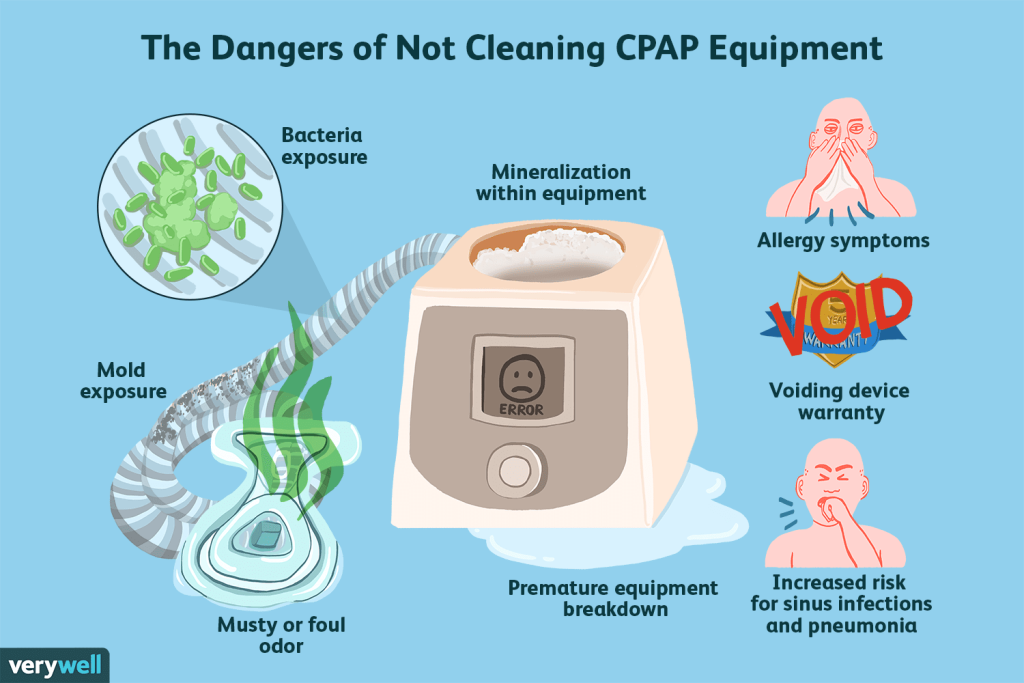How to Prevent Moisture Build-up in CPAP Tubing and Masks
CPAP machines are a common treatment for sleep apnea, providing a continuous positive airway pressure to keep the airways open during sleep. However, one common issue faced by CPAP users is the build-up of moisture in the mask and tubing, which can lead to discomfort and disrupt sleep. In this article, we will explore the causes of moisture condensation in CPAP machines, commonly known as “rainout,” and provide practical tips on how to avoid this problem.
What Causes Moisture Build-up in CPAP Machines?

The build-up of moisture in CPAP machines is most often due to the use of a heated humidifier. This feature is recommended to alleviate symptoms such as sneezing, throat irritation, dry mouth, and cracked nasal passages that can occur when using non-humidified air from a CPAP machine. The heated humidifier promotes sleep and improves comfort by reducing congestion caused by nasal dryness. However, problems can arise when the heated moisture is delivered through an unheated tube.
When the warm, moist air from the humidifier enters the unheated tube, it can start to condense and form tiny beads of water. As a result, these beads can accumulate in the tube and eventually make their way to the mask, causing spitting sounds, water splashing on the face, and even waking the user up during sleep. This phenomenon is known as “rainout.” The risk of rainout is higher if you sleep in a cold room or if the humidity setting on the machine is set too high.
Signs of Water Build-up in CPAP Tubing

To ensure optimal performance of your CPAP machine, it is crucial to maintain the right balance of heat and humidity in the mask and tubing, matching the ambient temperature and humidity. If there is excessive moisture build-up in the CPAP tubing, several signs may indicate the presence of water:
- Spitting, popping, or gurgling noises: If your CPAP machine produces these sounds, it could be a sign of moisture condensation in the tubing.
- Water splashing on the face: Feeling water splashes under the mask during sleep can also indicate the presence of water build-up in the tubing.
- Coughing or gagging: Inhaling water from the mask can lead to coughing or gagging, disrupting your sleep.
- Moisture under the mask: When you remove the mask, if you notice a significant amount of moisture accumulated underneath, it suggests the presence of water in the tubing.
- Visible moisture: Shaking the CPAP tube may reveal accumulated moisture inside.
How to Remove Water from CPAP Tubing

If moisture condensation has occurred in the CPAP tubing, it is essential to remove the water to prevent the growth of fungus or bacteria. There are a couple of ways to effectively remove water from the CPAP tube:
- Rinse the tube: Disconnect the CPAP tube from the machine and give it a thorough rinse. Reattach the tube and run the machine for several minutes without any water in the reservoir to allow the tube to dry.
- Hang the tube to dry: Alternatively, disconnect the tube from the CPAP machine, rinse it, and hang it over a doorway or a suitable place to air dry completely.
It is also crucial to regularly wash the mask, tube, and water chamber according to the manufacturer’s instructions. Typically, washing should be done at least once a week, but if you are sick, daily washing is recommended.
Tips to Avoid Water Build-up in CPAP Tubing
While moisture build-up in CPAP tubing is a common issue, there are several simple ways to prevent this problem and improve the effectiveness of CPAP therapy. Here are some tips to consider:
1. Use Heated Tubing
One of the best ways to avoid condensation in CPAP tubing is by using heated tubing, also known as a climate line. A climate line delivers warm, moist air from the heated humidifier to the CPAP mask, balancing the internal and external temperature to prevent moisture condensation. Many newer CPAP units come with a built-in climate line as a standard feature, while older machines can be fitted with a special heated tube attachment. Look for brands like Hybernite Rainout Control System for effective rainout prevention.
2. Adjust the Humidifier Setting
Another option to prevent water build-up in CPAP tubing is to adjust the temperature of the humidifier. Start with a lower temperature setting and gradually increase it until you find the highest humidity level that does not cause rainout. CPAP machines generally have humidity settings ranging from 1 to 6, so experiment with different settings to find the optimal balance.
3. Consider Ambient Temperature
Finding the right balance between the humidifier temperature and the ambient temperature of your sleep environment is crucial. Start by determining the ambient temperature that is most comfortable for you to sleep in. Then, adjust the temperature of your humidifier accordingly to prevent excessive moisture condensation. Keep in mind that adjustments may be necessary during hot summer months or cold winter months.
4. Adjust the Position of the Machine
Changing the position of your CPAP machine can also help prevent moisture from running back into the tube and mask. Placing the machine on the floor instead of a bedside table or shelf can minimize the risk of water splashing onto your face. While this tip may not completely eliminate spitting or sputtering sounds, it can help prevent splashback.
5. Insulate the CPAP Tube
Another effective way to prevent moisture condensation in CPAP tubing is to insulate the tube. By covering the tube with special fabric covers or homemade covers, you can help maintain the temperature and reduce the likelihood of condensation. Look for brands like SnuggleHose for pre-made fabric covers or consider making your own cover using insulating materials.
In Summary
Moisture build-up in CPAP tubing and masks can be a frustrating issue for CPAP users, leading to discomfort and disturbed sleep. However, by understanding the causes of moisture condensation and implementing preventive measures, you can minimize or eliminate this problem. Remember to use heated tubing or adjust the humidifier settings to find the optimal balance between temperature and humidity. Consider the ambient temperature of your sleep environment and make necessary adjustments. Additionally, try changing the position of the machine and insulating the CPAP tube to further prevent moisture build-up. By following these tips, you can enhance the effectiveness of your CPAP therapy and enjoy a more comfortable sleep experience.

